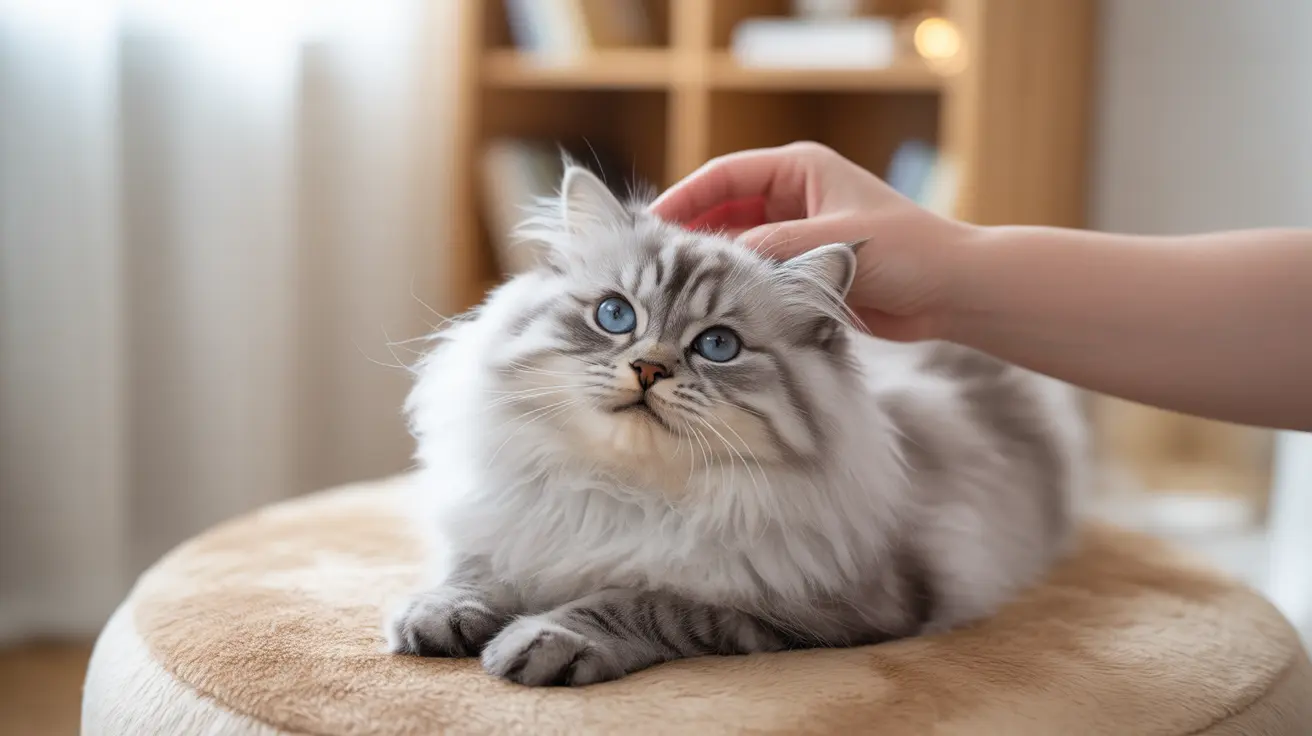The Science Behind Cat Head Massages
Cats have specialized sensory receptors and scent glands concentrated around their heads, particularly in their cheeks, chin, and forehead. When you massage these areas, you're not just providing physical comfort - you're engaging with their natural social and territorial behaviors.
Head massages trigger the release of endorphins and oxytocin, often called the "love hormone," which promotes relaxation and emotional bonding between you and your cat. This biochemical response explains why many cats seek out head massages and display signs of contentment during these sessions.
Health Benefits of Head Massages for Cats
Regular head massages offer numerous health advantages for cats:
- Reduced stress and anxiety levels
- Improved blood circulation
- Enhanced immune system function
- Better sleep quality
- Decreased muscle tension
- Early detection of health issues through touch
These benefits are particularly valuable for senior cats or those recovering from illness, as gentle massage can help maintain mobility and comfort while strengthening their bond with caregivers.
Reading Your Cat's Body Language
Understanding your cat's responses to head massages is crucial for a positive experience. Look for these signs of enjoyment:
- Purring
- Slow blinking
- Relaxed posture
- Leaning into your touch
- Head bunting
Conversely, watch for signs of overstimulation or discomfort:
- Tail twitching
- Skin rippling
- Ear flattening
- Sudden movement away
- Growling or hissing
Proper Head Massage Techniques
To give your cat an enjoyable head massage:
- Start with gentle strokes on the forehead
- Move to circular motions behind the ears
- Progress to the cheeks and chin
- Keep sessions brief (1-2 minutes initially)
- Always follow your cat's lead
Remember that consistency and gentleness are key to building trust and maintaining comfort during massage sessions.
Special Considerations
Some cats may require modified approaches to head massage:
- Senior cats might prefer lighter touch
- Anxious cats may need shorter sessions
- Cats with medical conditions should receive vet approval first
- Recently adopted cats might need time to build trust
Frequently Asked Questions
Do most cats enjoy gentle head massages, and which areas do they like to be massaged?
Most cats enjoy gentle head massages, particularly around their cheeks, behind the ears, and under the chin. These areas contain scent glands and are naturally sensitive to touch, making them preferred spots for massage.
How can I tell if my cat is uncomfortable or overstimulated during a head massage?
Watch for signs like tail twitching, skin rippling, flattened ears, or attempts to move away. These indicators suggest your cat needs a break from massage stimulation.
What are the health and emotional benefits of giving my cat regular head massages?
Regular head massages can reduce stress, improve circulation, boost immune function, and strengthen the emotional bond between cat and owner. They also provide opportunities for early detection of health issues.
How should I properly massage my cat's head to ensure it's safe and enjoyable for them?
Use gentle, circular motions with your fingertips, starting slowly and watching for positive responses. Keep sessions brief initially, and always respect your cat's preferences for pressure and duration.
Can using a head massager device be safe and beneficial for cats, or should I stick to hand massages?
While some cats may tolerate massage devices, hand massages are generally safer and more effective. They allow better control of pressure and immediate response to your cat's reactions. If using a device, choose one specifically designed for pets and introduce it gradually.
Remember, every cat is unique in their preferences for physical touch. Pay attention to your cat's individual responses and adjust your approach accordingly to ensure the most beneficial and enjoyable experience for both of you.






